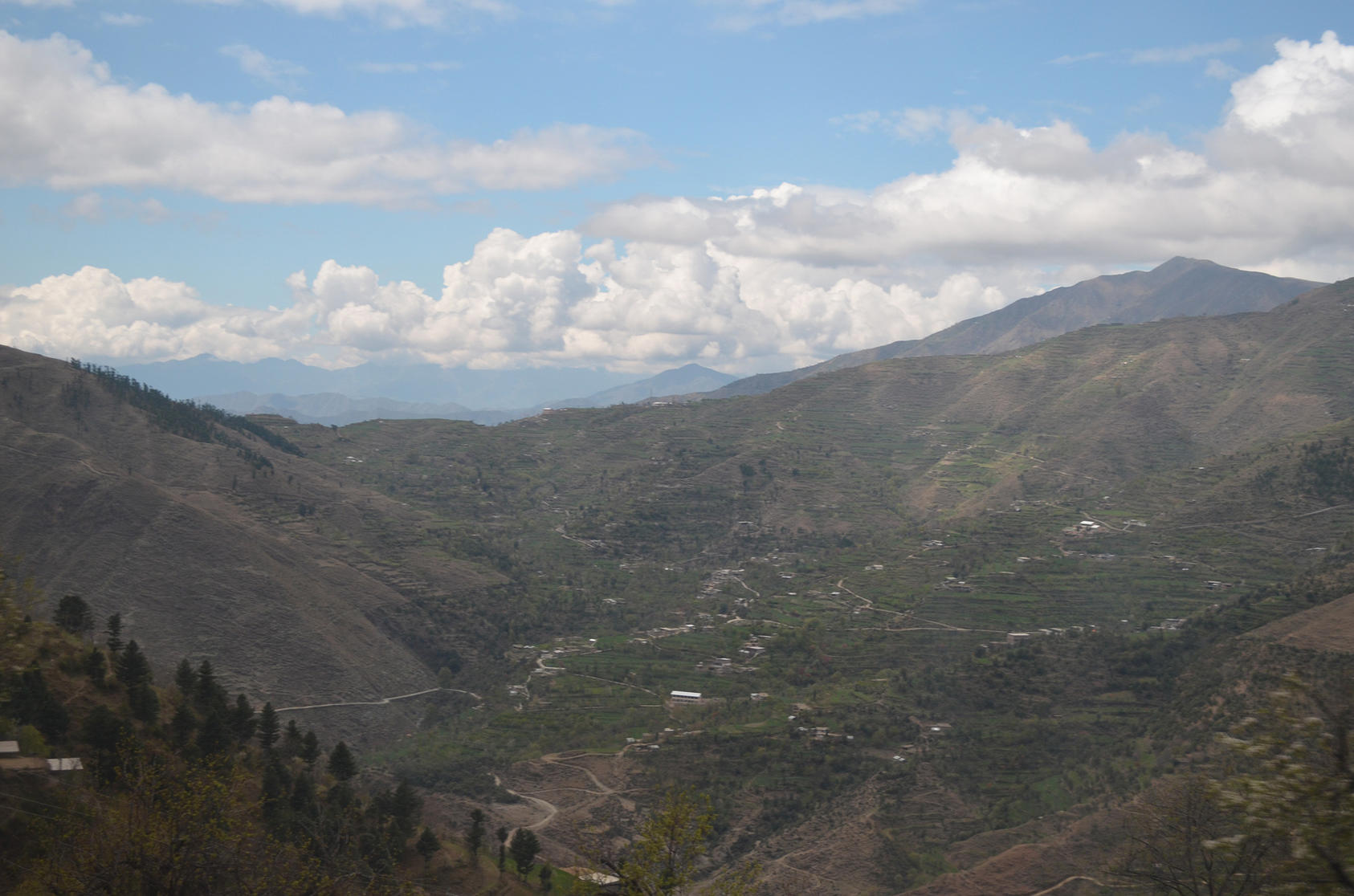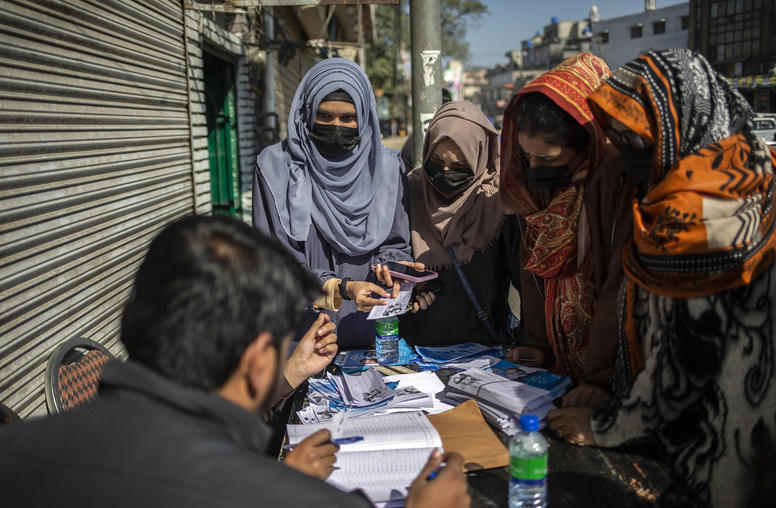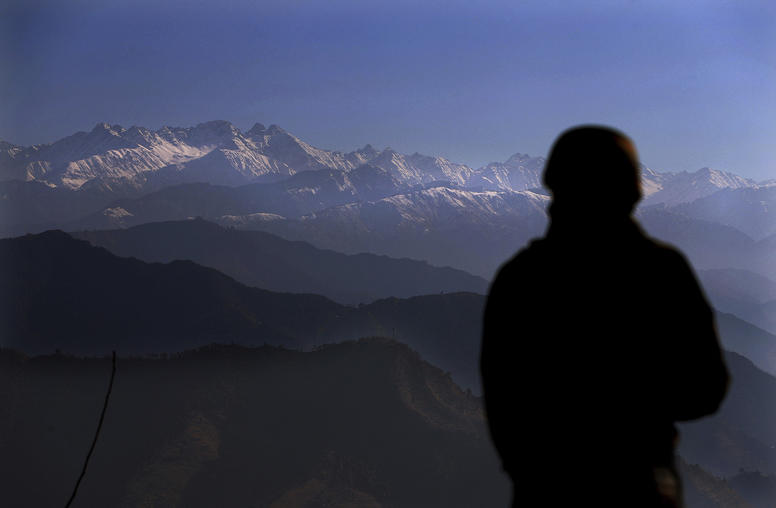The boy’s name is kept secret by his protectors, but he is memorable for his former job with the Taliban: as a small, walking bomb.
When he was 11 years old in a mountain valley of northwest Pakistan, Taliban fighters indoctrinated the boy as a suicide bomber and fitted him with an explosives-filled vest. Whenever their commander appeared in public, the boy’s job was to walk a distance in front of him. The commander held the bomb’s remote control and, if he saw danger approaching, would detonate the boy. Traumatized by constant fear, the boy bomber decided to escape.

When his moment came, the boy simply walked away from the Taliban handlers. He soon was detained by the Pakistani army, among hundreds of extremist fighters. Uncertain what to do with such young militants, the army called one of Pakistan’s few prominent psychologists, a grandmotherly doctor named Feriha Peracha. She quickly began developing a program that has “de-radicalized” former Taliban fighters—using mental health therapies and education to reverse their commitment to extremist ideology and their readiness to commit violence.
In Peracha’s care, the boy bomber was often offered paper and paints. “He always drew red buckets that appeared filled with blood,” Peracha said. He was “very wary of strangers or people with cameras. I think he was afraid that if discovered he would have to go back among the Taliban.”
Peracha won’t disclose the youth’s name or other details that could expose him to public notice. But she will say what became of him: He is back in his home valley, working as a tailor.
In the eight years since Peracha took the army’s call, she has led in developing the Sabaoon Rehabilitation Center, whose staff members have undone the Taliban’s indoctrination of 192 former fighters and reintegrated them into their communities. The center is in Pakistan’s Swat Valley, which the Taliban progressively took over and briefly ruled a decade ago. Peracha’s work provides evidence of how the youths were radicalized, and thus how violent ideologies can be undermined. It overturns popular notions about both and offers principles for better policies by governments and organizations on countering violent extremism.
Peracha’s “engagement with former fighters in need of rehabilitation is valuable as a testing ground for what works and doesn’t work in reintegrating them into their communities,” said Candace Rondeaux, a USIP staffer who coordinates RESOLVE, a global research network on violent extremism. “With ISIS losing territory in Syria and Iraq, and its fighters returning home, this reintegration work is increasingly important across the Middle East and in Europe.”
“In some countries there simply is no pathway” to help former members of extremist groups “disengage from the fight,” Rondeaux said. “Only local initiatives can help us understand how to do that.”
Recruiting Tools: Ignorance, Isolation
A widespread impression in popular and social media is that the source of radicalization by the Taliban, ISIS or Boko Haram is the Islamic faith, preached in hardline mosques or madrassas. But Peracha’s fieldwork, like many scholarly inquiries, underscores that extremists recruit in disparate ways, most often by exploiting the vulnerable. The Taliban prey notably on youths who are alienated or isolated from their families or communities, whether by poverty, low social status, exclusion from schools, or the absence of their fathers, Peracha’s team has found. They target boys young enough to mold, typically in their early teens, but as young as 10.
“These boys feel unsupported, and the Taliban provide that for them,” Peracha said. “The pattern is not much different from children who may be recruited as members of street gangs in California,” such as Mara Salvatrucha, or MS-13.
Some boys Peracha has treated were virtually abducted, she says. Armed Taliban have canvassed villages to pressure residents for contributions. If families cannot offer cash, the militants have pressed them to provide a child recruit instead. Children whose adult relatives are militants may be trained ideologically and militarily at home.
While the Taliban do use hardline Islamist argument to sway more educated or middle-class recruits, they simply make up religious ideas for the larger groups of uneducated youth who lack critical thinking skills, Peracha said. Taliban “tell these boys that the Pakistani army is actually trained by America, that many Pakistani soldiers are not even Muslims, and that all this is written in the Quran,” she said. Many boys, either illiterate or taught simply by rote in dysfunctional schools, “have never learned critical thinking skills, or how to ask a question,” Peracha said. “We have to teach them the importance of verifying what they are told.”
Solid family and community ties make youth more resistant to recruitment by violent extremists, and are central to any effort, such as Peracha’s, to de-radicalize militants and return them to productive lives. Over years, USIP has found that the most effective programs to prevent recruitment of potential militant fighters are those that involve parents and siblings in any intervention. This is notably the case given the strong influence of families in Pakistan’s traditionally tribal society.
A USIP report this year surveyed efforts in European, Middle Eastern and Asian countries to deradicalize or reintegrate former extremist fighters. It found such programs more likely to succeed “when they are developed by communities and informed by a local understanding of social norms” and traditions. “The active participation of family members and communities is key,” it said.
The Army Calls
Growing up in Pakistan, Peracha vacationed with her family in the Swat Valley, amid northwest Pakistan’s snow-capped mountains. Her education and career took her to live for decades in Canada and England before she returned to Pakistan in the 1990s to open a psychology practice in the city of Lahore.
“I didn’t know what my color was. Then 9/11 came, and I knew I was brown,” she told an interviewer shortly after she began developing Sabaoon. “I didn’t want to live in a world where I’m not safe, whether I’m brown, white or red. But secondly, I had to take responsibility for what’s happening here” in Pakistan.
In the years after 9/11, a pair of radical clerics in the Swat Valley built a Taliban-aligned insurgent movement that banned and bombed schools for girls, and killed residents who questioned the militants’ narrow interpretations of Islam. When the Swat militants finally provoked a 2009 army offensive to recapture the valley, the military soon found itself detaining Taliban fighters, many of them teens and pre-teenage boys.
Peracha received a phone call from an army commander. His troops held 12 Taliban child soldiers whom he had no idea how to handle. He asked Dr. Peracha to come to Swat and evaluate them.
“I was frightened,” Peracha said. Wondering what ferocity she might encounter in the young radicals, she wore a veil to conceal her face. But what she found were boys who had been brainwashed and traumatized. She traded her veil for maternal empathy. “I told the army, ‘Please don’t send them to an internment center,” she said. “We should have a compassionate approach,” re-schooling the boys to “change their hearts and minds and give them alternative goals for life.”
The Essential: ‘Hope for Their Futures’
The result has been what Peracha describes as a joint civilian-military success. She joined civil society colleagues to form a non-profit organization called Social Welfare, Academics, and Training (SWAaT) for Pakistan. The group works with the Sabaoon center, which is secured by the army. “I give the Pakistan army credit that they opened up Sabaoon and handed it over to us,” Peracha said. “They have not interfered with the program at all.”
For the past two years, the U.S. Institute of Peace has supported the SWAaT program, which provides long-term monitoring and support for the Sabaoon graduates, to ensure that they are not co-opted back by extremist groups. SWAaT also has begun a campaign to prevent radicalization in the first place by providing libraries and teacher training to schools in the Swat Valley where Taliban recruitment has been the most active.
Of the 192 youth released from Sabaoon into their communities, none has returned to the Taliban or radicalism, Peracha said. Those released need continued monitoring, support from their community, and protection by local police from attacks by the Taliban. In a handful of instances, the program has intervened to temporarily return a graduate to the rehabilitation center when he was seen in danger of falling again under the militants’ sway.
Peracha underscores that the process of deradicalization is individual to each militant, and that it normally takes years, both in custody at Sabaoon and under monitoring afterward. The intensive, combined effort in Swat—rehabilitation led by psychologists and supported by a civil society, the government and the military—has been difficult for Pakistan to replicate nationwide. A 2015 USIP report on deradicalization programming in Pakistan found only “scattered efforts by police and civil administration elsewhere in the country.”
The essential task of deradicalization is “giving people hope for their futures,” Peracha said. And the even more vital task is preventing radicalization in the first place. “Our premise is that children in rural areas in Pakistan need to remain in school, to have a reasonably good education to chart a course in life and be gainfully employed.”



